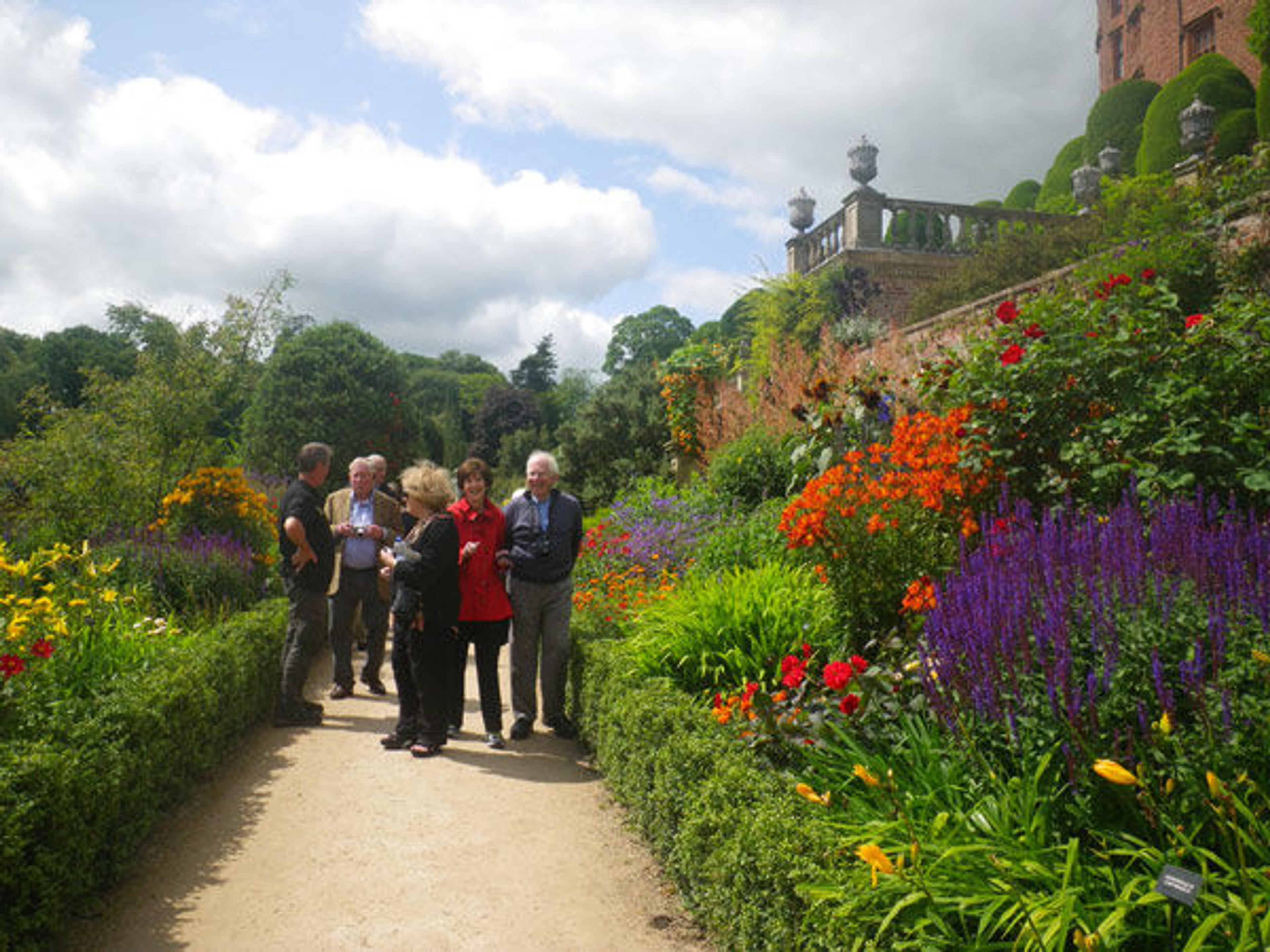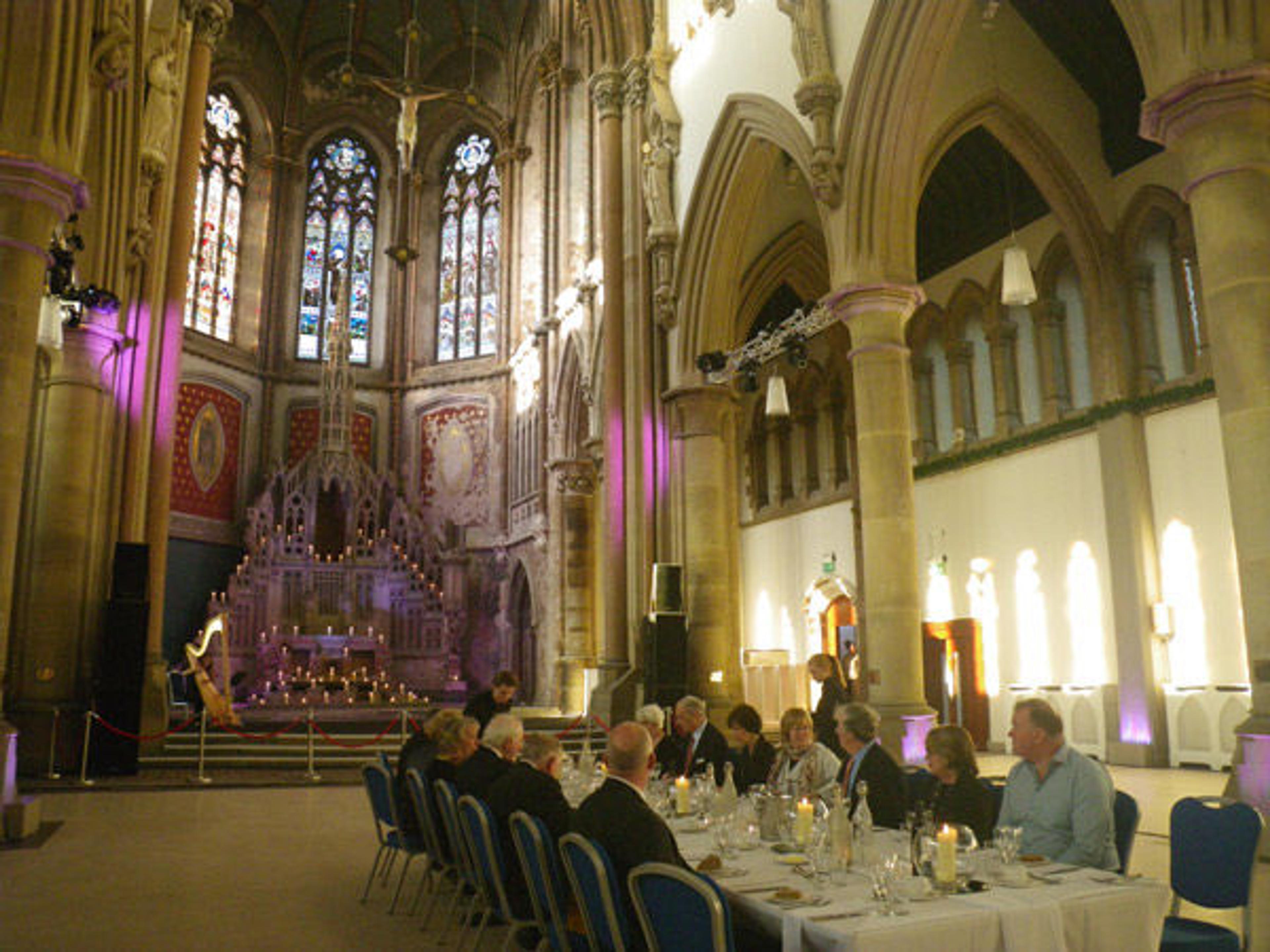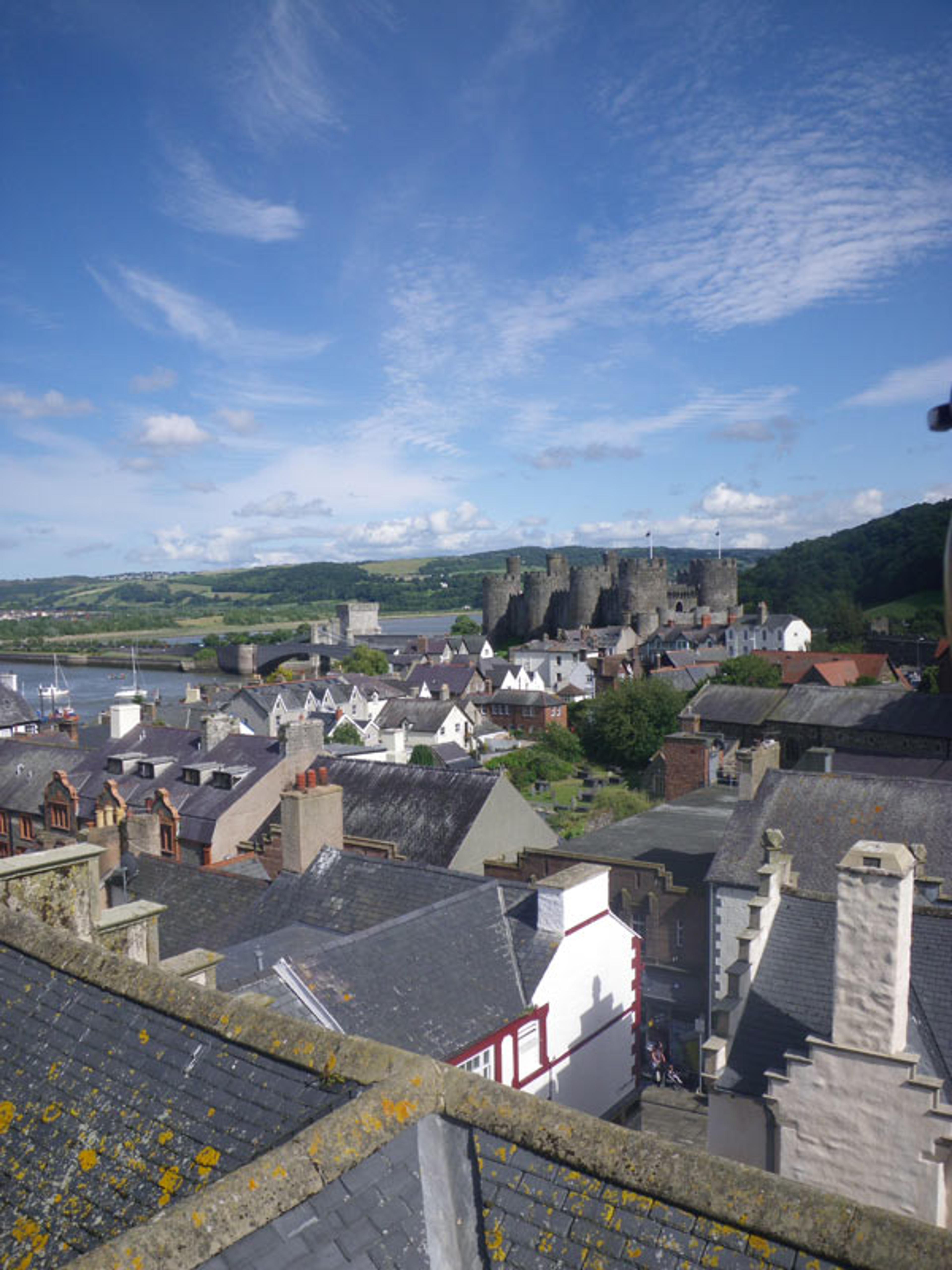This view of Conwy Castle is taken from the turret of Plas Mawr, a delightful Elizabethan townhouse preserved in the small seaside town; its gables can just be glimpsed at the lower right. Images courtesy of the author
«It was the English King Edward I who finally managed to wrestle a yoke onto the Welsh in 1284. Realizing that one of the great flaws of previous forays into the Welsh territories had been the inability to maintain those footholds, Edward used Wales's great coastline against it.»
He supplemented existing strongholds by building brand-new, state-of-the-art castles as a means to hold and garrison hard-won territories. These new castles allowed him to supply his men with provisions and reinforcements from the sea rather than attempting to reach them across land. Conwy Castle is one of Edward's splendidly intimidating, so-called "iron-ring" fortresses that we visited.
Built a handful of years later, in 1286, Powis Castle was not made for the English to subdue the Welsh like Conwy. Instead, it was erected by Owain ap Gruffydd, the last hereditary Prince of Powis, after he renounced his royal claim to the Welsh crown and, in return, was granted the title Baron de la Pole. By the late seventeenth century, encouraged by the land's commanding topography, William Herbert, first Marquess of Powis, developed great cascading terraces of formal gardens. These terraces were so stunning that even William Emes, a disciple of Capability Brown, was stopped in his tracks and forbore to demolish them when he "landscaped" the rest of the estate.
In one of the highlights of our tour, our group was led around the castle by the National Trust's house manager, Gareth Sandham. Head Gardener David Swanton showed us the gardens.

Our group exploring Powis Castle and Garden
Our visit to Wales has been punctuated with memorable gastronomic treats; highlights were undoubtedly lunch at Llanerch Vineyard, dinner at the Bull's Head Inn in Beaumaris, and a spirited presentation by culinary celebrity Dai Chef at the Bodnant Welsh Food Centre. Back in Manchester, England, our last evening achieved a truly inimitable experience, as we dined in the nave of the deconsecrated neo-Gothic grandeur of the former Friary of Saint Francis—only recently rescued from demolition.

A serenade of Welsh harp music from the candlelit east end substantiates the ethereality of the evening––an appropriately unexpected ending for a trip filled with discoveries, surprises, and unanticipated delights.
Although only one-seventh the size of New York State, the country of Wales, nestled in the protruding western belly of the British Isles, offers such a gamut of cultural, picturesque, and culinary experiences that every traveler will find something here in which to delight.
